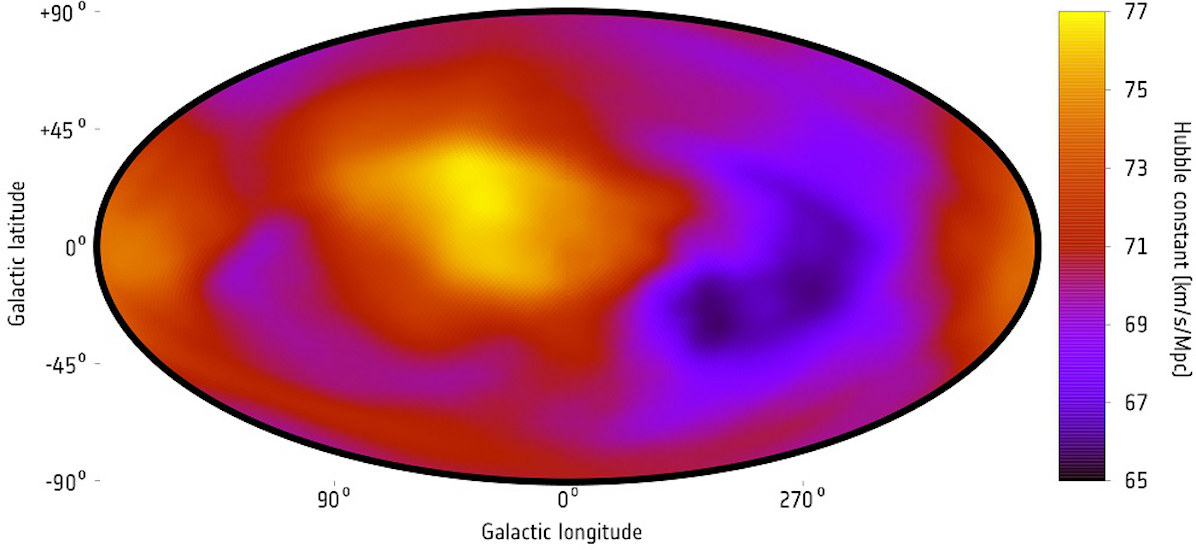
 Credit: K. Migkas et al. 2020 - CC BY-SA 3.0 IGO
Credit: K. Migkas et al. 2020 - CC BY-SA 3.0 IGO
A Strangely Growing Universe?
A fundamental tenet which guides the study of the origin and evolution of the Universe, is that, on large scales, the Universe is isotropic, the same in any direction you care to look. It's difficult to imagine a reason why this wouldn't be the case - why would any particular direction in the Universe be special? And the universe appears to be isotropic, according to cosmic microwave maps from COBE, WMAP, and Planck, and while there may be a few discrepancies, most have relatively mundane explanations (like the "CMB dipole" produced by the motion of our solar system relative to the cosmic microwave background, or the mysterious "cold spot" which may be associated with a "supervoid" in intergalactic space). But in science, hypotheses must be tested to the largest extent possible. Recently, scientists have attempted to test the hypothesis of Universal isotropy by measuring the X-ray properties of clusters of galaxies all around the sky. Clusters of galaxies are the largest gravitationally bound structures known, and are bright X-ray sources due to the extremely hot, million-degree gas that fills the space between them (and which contains much more mass than all the stars and gas in the cluster galaxies themselves). Studies have shown that the hotter this X-ray emitting intracluster gas is, the more luminous it is. But a new study showed an unexpected result: in some regions of the sky, the clusters were apparently fainter than predicted by the X-ray temperature-brightness relation. At face value, this could mean that the Universe is expanding faster in some directions than others. The derived difference in expansion rate is shown in the image above, where colors show the expansion rate on a map of the entire sky. The significance of the result is still too low to cause a widespread revolutionary change in our understanding of the Universe. New observations using eROSITA X-ray observations of galaxy clusters, and other observations from other telescopes, will help shed more understanding of this puzzling result.
Published: July 18, 2022
<
HEA Dictionary ● Archive
● Search HEAPOW
● Other Languages
● HEAPOW on Facebook
● Download all Images
● Education ● HEAD
>

Each week the HEASARC
brings you new, exciting and beautiful images from X-ray and Gamma ray
astronomy. Check back each week and be sure to check out the HEAPOW archive!
Page Author: Dr. Michael F. Corcoran
Last modified Monday, 26-Feb-2024 17:35:14 EST


